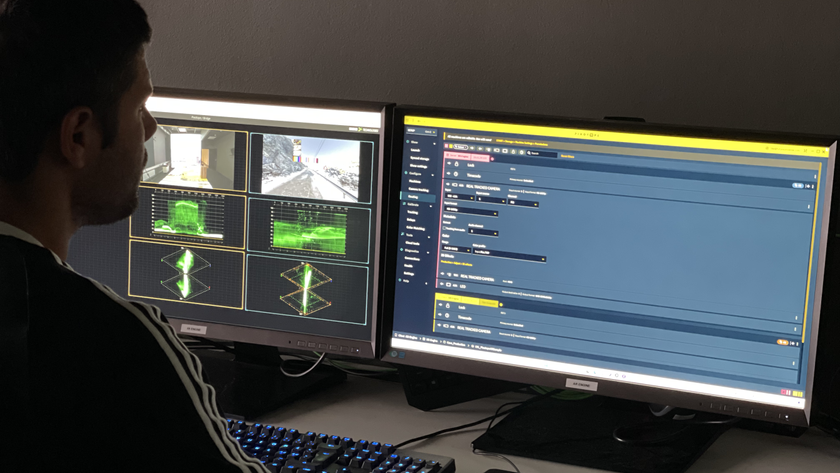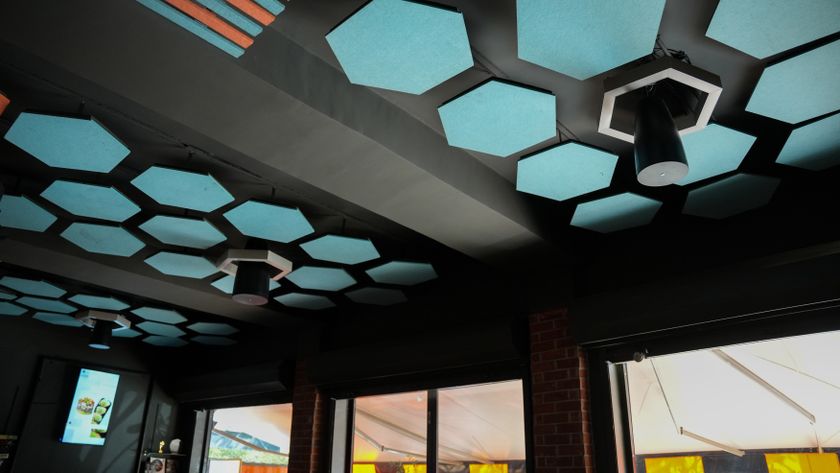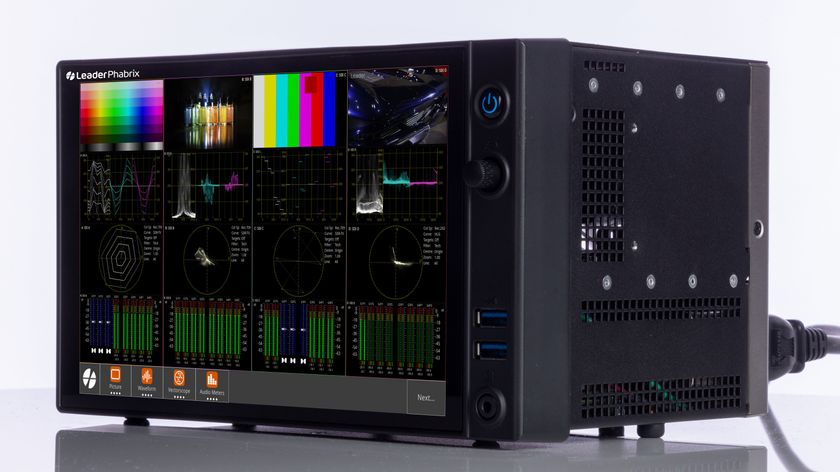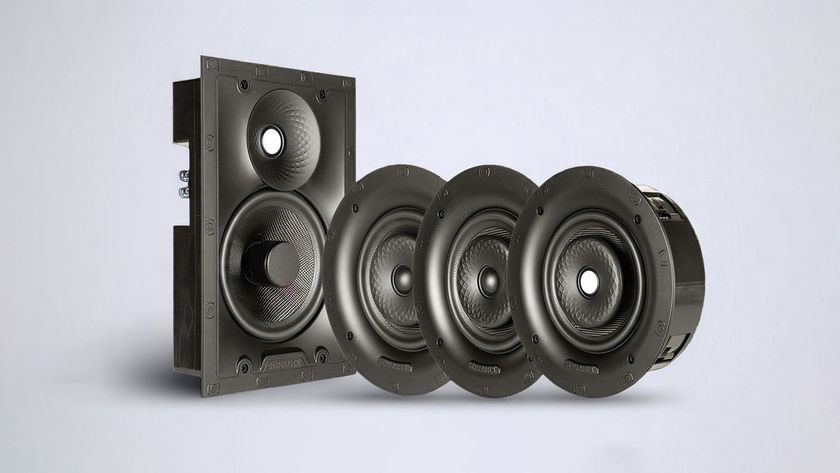There are a lot of inexpensive projectors on the market these days. Unfortunately, while the image quality is acceptable, they are universally light in the lumens department.
If ambient lighting can't be avoided, Panasonic has introduced a projector that provides a combination of 3000 lumens, native XGA resolution, and user-friendly functionality. The PT-LB30U isn't a small unit-its molded plastic exterior is about 13 inches wide by 9.5 inches long (including lens cover), and you're going to need to leave some space in the back for power and input connections. Still, it only weighs about 5.5 pounds, so it's certainly portable enough to share between classrooms.
Bright Lights, Little Joystick
For users intimidated by technology, the LB30 has only three well defined buttons on top: power, input and auto setup. As long as your sources are already connected, these three buttons provide the basic controls for the projector that will satisfy the vast majority of users. The unit also features manual zoom and focus.
The projector comes with a card-sized remote, a form factor in remotes that I generally despise, especially for a projector that's not trying to be the lightest or the smallest. In its defense, the Panasonic remote provides all the essentials, including auto setup, volume, digital zoom, freeze, shutter (which blanks the image and audio), and menu access.
When you lose the remote-and we all know you're going to lose it-Panasonic has you covered with one of the smartest control interfaces I've seen. On the rear of the projector, there's a small menu button above a small joystick.
The casual user will never need to use these keys, but advanced users will have access to the unit's extensive menu of options (push the joystick in to "enter" your choice). I abandoned the remote almost immediately and did most of my adjustments using the joystick. Panasonic is certainly not the only company to provide menu access from the unit itself, but I really like the way the PT-LB30U keeps the main user interface uncluttered.
Honestly, this is not the projector if your primary purpose is watching DVD or VHS material. It's certainly OK for the occasional screening, but the images (especially dark scenes) aren't the best I've seen. No, the PT-LB30U is a projector to consider if you need to show PowerPoint slides, spreadsheets, and other text-heavy items when turning off the lights is not an option.
This is very clearly a native XGA projector, as 1024x768 computer material looked absolutely crystal clear. PowerPoint slides, Excel spreadsheets, even photos were beautifully reproduced. Downconverted SXGA material wasn't as clear but still very readable.
The PT-LB30U also features a sensor that can automatically adjust the vividness of the projected images. Called "Daylightview," think of it as a kicker that provides a bit more output in bright light. Through the on-screen menu, you can turn this feature on or off, or you can set it to "auto" and let the projector figure out the lighting for itself (my recommendation). If you shut it off, you can then set your white balance for fluorescent or incandescent lighting.
Even though I was armed with a Konica Minolta CL-200 light meter (very sweet, by the way), I didn't try to recreate a typical projector lab and see how close the unit performed to its published specs. Instead, I put the PT-LB30U through its paces in real world settings.
In fact, I played dirty; I projected an image on an off-white wall from 12 feet away, then blasted the room with fluorescent light. The image from my Macintosh G3 was washed out, as you'd expect, but it was still visible and legible. When I popped my Lost in Space DVD (at least it's good for something) into my portable Panasonic DVD player, the dark space scenes really were lost, but the brighter scenes could still be seen.
Next I went to an office with windows, with more than enough midday light pouring through to allow people to take and read notes. With the windows about 10 feet to the side, the projector had enough brightness to even keep the dark space scenes visible.
The built-in speaker is not as tinny as you'd expect, but it's still a 1-watt speaker that won't provide adequate volume for anything more than a small group huddled around the projector. Without the remote, you can only control the volume through the on-screen menu.
Meddling With Menus
Most users will probably be more than happy with Panasonic's presets, but the PT-LB30U has plenty of user-defined options. Its picture menu, for example, provides you with a choice of "modes" to improve the image color based on lighting conditions (there's a blackboard setting as well), as well as individual control of contrast, brightness, sharpness and color temperature.
From the main menu, you can also create an index window and engage the shutter option, choose your operating language, and access security features. The option menu also lets you shut off the automatic setup and keystone, plus keep track of your lamp runtime and fiddle with other settings.
One feature I don't like is the projector's resizing of S-Video or standard video signals (which have less resolution than the LCD panels). The idea is to upconvert the images so they fill the projected image-for some people, a bigger picture is always a better picture. As a more discriminating viewer, however, I thought the resized images looked muddy, pixelated and generally unacceptable.
What I like about the PT-LB30U is that it's a bright, versatile projector that really can appeal to a variety of users. With a simple user interface and mostly excellent automatic functionality, the PT-LB30U can easily be adopted by even the most technologically timid on your team. And for more advanced or exacting users, the menu options run deep.










